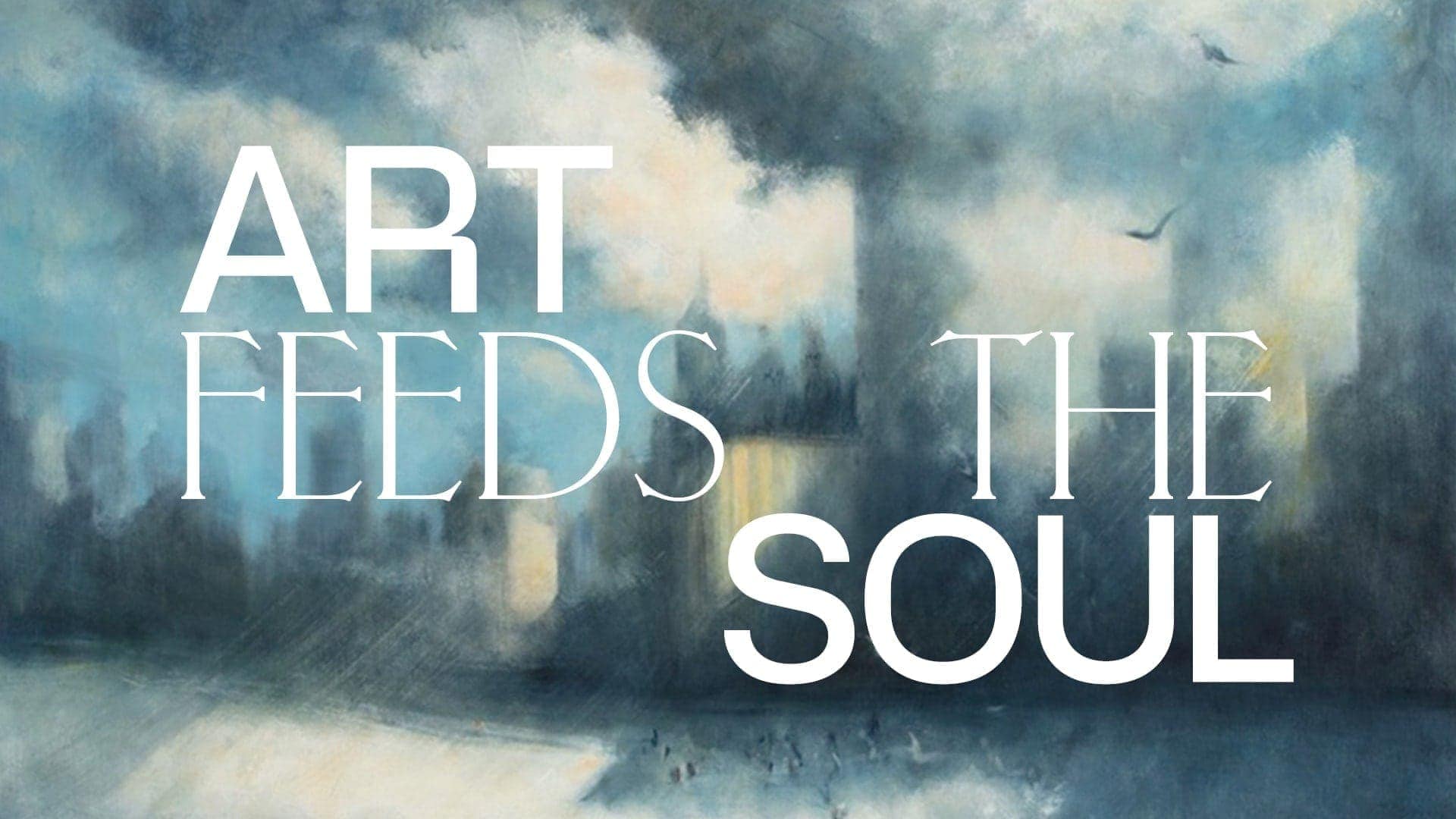
What is ‘Art Feeds The Soul’?
While discernible in ordinary life, there is no place in which the above quote by de Botton is more clear than in the art gallery – a place where even the most optimistic people are faced with questions of purpose.
This leaves little space in a gallery for art that is comfortable, that is familiar, and even less for art that is comforting. But the challenges of art can themselves be comforting. In this vein, we look at several pieces in permanent collections around London that are not necessarily easy to see, but that may be today’s apothecary for our existential needs.
The Rink, 3pm
Bill Jacklin RA (1992)
Above the Air Canada boarding gates at the Ronald Reagan National Airport in Virginia is a relatively small mural depicting a swirl of skaters like dancing shadows in a circus pit. Who would have thought that this is where we would begin this week, in dull Washington, for a series about uplifting art in London.
In 1985, Bill Jacklin – a British printmaker – moved to New York and began painting a series of paintings of the city. The Rink, 3pm is typical of his work in this period.
Who would have thought that this is where we would begin this week, in dull Washington, for a series about uplifting art in London.
Whereas in the airport mural the skaters fill the entire frame, allowing the viewer to imagine it as being anywhere in the world, this painting unequivocally depicts Central Park. The perspective yanked back to include a view of the Manhattan skyline, its skyscrapers brushed by thin clouds.
One of the World Trade Center’s towers cast their shadow downwards across the nearest section of the rink – a barrier through which the skaters move, undaunted. Having said that, their swirl is birdlike, even fragile. One torso is a splodge of bright yellow, another hardly discernible – caught up in the moving shape of several others. This rink – like a sunset, or any body of people for that matter – will never twice look the same. Entirely different light, different people, different markings on the ice.
Bill Jacklin RA is a connoisseur in the movement of people. His relocation from London to New York in the mid 80s coincided with a notorious crime wave. The Five Families were rapidly losing their power and influence in the Boroughs, and warfare between a multiplicity of different factions attempting to carve up the territory was front and centre in the streets.
He discovered in his own marauding profession that concealment in the action of crowds afforded a certain secrecy. Among voyeurs and performers, the observer is invisible.
In London during the 70s Jacklin had built his reputation as an abstract painter, a minimalist juggling squares and dots, but now people were his patterns. New Yorkers crossing the street, in the park, at Coney Island beach. These people provided effectively the closest thing to a ‘random’ motif – an endless asymmetric variation of bodies.
Jacklin discovered in his own marauding profession that concealment in the action of crowds afforded a certain secrecy.
It dawned on me that the printmaker’s pursuit of uniformity in his image repetition is not unlike a skater tracing figures over and over again. The blades score the ice as deliberately as the artist’s hand passes the burin over the etching plate, leaving a channel which will hold the ink. Just as the skater scrapes to a halt in a clearly defined line, the print run is over in one brutal gesture as a line is scored across the plate to signal the end of the edition. Plates and skates: thin sheets of metal, one placed down on blank paper, the other slicing across the ice.
This contrived, slightly blurred vision of a large crowd, viewed from a high vantage point, grants us both a sense of distance, but also a feeling of electrical excitement at the swirling currents of energy which we generate.


